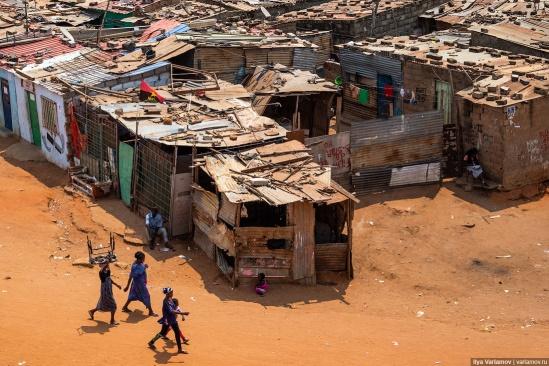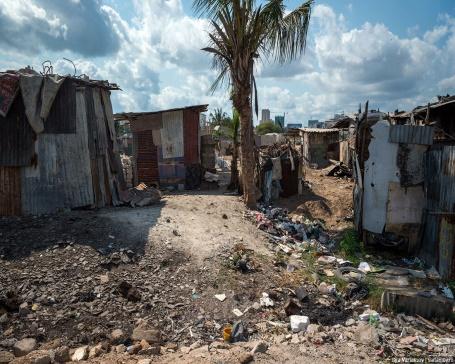УМК Spotlight – 11 (О.В.Афанасьева, Дж.Дули, И.В.Михеева, Б.Оби, В.Эванс) Москва Express Publishing «Просвещение»
Тема: Урбанизация в развивающемся мире: трущобные города
Цель урока: повышение образовательного уровня, совершенствование коммуникативной компетенции учащихся на основе практического владения знаниями по теме “Urbanisation in the Developing World: ShantyTowns”
Образовательный компонент: развивать лингвистический и общий кругозор учащихся; практиковать учащихся в чтении с полным пониманием и извлечением необходимой информации, аудировании с извлечением необходимой информации, говорении.
Развивающий компонент: развивать интеллектуальные и познавательные способности учащихся, умения работать в паре, группе, к переключению внимания в разных видах речевой деятельности.
Воспитательный компонент: воспитывать способность к сопереживанию, чувство толерантности, желание изменить мир к лучшему.
Активизация лексики урока по теме «Accommodation»


Объявление темы, постановка целей и задач урока.
Look at the pictures and guess the topic of the lesson (Shanty towns)
Цели и задачи урока:
We’ll discuss the problem of urbanization in the developing world
We’ll know the origin of the problem.
We’ll learn how people live in slums and what prospects they have
We’ll use the new words in your own speech.






3. Read the text at page 96 and answer the questions
-Why do shanty towns appear?
-Why do people stay in shanty towns and do not leave them?
- Why don’t the governments do anything to improve the situation?
- Are there any organisations that help slum dwellers?)
- What can be done to improve the situation?
4. Match the words with their meanings
| 1. something that makes it comfortable or enjoyable to live or work somewhere | a) worthless
|
| 2. having no value | b) dweller |
| 3. inexpensive/ cheap enough for ordinary people to have | c) amenity |
| 4. someone who lives in a particular type of place | d) permanent |
| 5. physical condition caused by poor eating habits or lack of food | e) loan |
| 6. lasting forever | f) vast |
| 7. sums of borrowed money which must be paid back | g) decent |
| 8. extremely large | h) sanitation |
| 9. at an acceptable level/ good enough | i) malnutrition |
| 10. processes relating to people's health, especially the systems that supply water and deal with human waste | j) affordable
|
5. Listening
| A | B |
| 1 the distance of Kibera from the centre of the Kenyan capital of Nairobi, in kilometers | A 20 B 1 C 85 D between 750,000 and 1,000,000 E 35 F 2½ G 60 H 5 |
| 2 the area of Kibera, in square kilometers |
| 3 the number of the population of Kibera |
| 4 the percentage of child death under the age of 5 |
| 5 the percentage of adult population that is HIV (human immunodeficiency virus) positive |
| 6 the number of rooms in the family flat |
| 7 the money the average family lives on per day, in pence |
1. Read the information below. You are going to hear some facts about people’s life in the shanty town of Kibera. Match the information in column A to the right numbers in column B. There is one number that you can’t match to any information. www.makeadifferencefilms.co.uk
6. Work in groups and write a cinquain on the topic of today’s lesson. Look at the screen, it will remind you how to write a cinquain.

Приложение
Kibera (Script)
This is Kibera. It is 5 km from the centre of the Kenyan capital of Nairobi. It is widely accepted as being the world’s largest slum. Its area is approximately two and a half square km and the population is somewhere between 750,000 and 1,000,000. Nobody is really sure.
Whatever the estimates, one thing is certain, conditions on the ground are like nothing you’ve ever seen before. Waste and refuse are virtually everywhere you look. Sanitation is virtually non-existent and open sewers flow down almost everywhere on the way. Children play in its squalor contaminated water causeys. The stench is overpowering and, not surprisingly, disease is rife. Around 20 % of children die before the age of five and close to 60 % of the adult population are HIV (human immunodeficiency virus) positive. The average family lives in a single-room shack and survives on the equivalent of around 85 pence per day. Both children will only eat one basic meal per day.
In short, it is the scene of some of the worst poverty and most appalling living conditions on our planet.
Синквейн
1) slum
2) illegal, unsanitary
3) starve, pollute, suffer
4) gives people little hope / makes people’s life awful
5) misery
































